Lot details By Gyokuhosai Ryuchin, signed Gyokuhosai 玉宝斎 Japan, Edo (Tokyo), mid-19th century, Edo period (1615-1868) Superbly carved as the loot of Momotaro after vanquishing the demons on Onigashima, including the severed head of the three-eyed demon chief in the form of rokurokubi with outstretched tongue, a large treasure box with a banner on top incised with a peach design and the inscription Nihon’ichi (‘number one’), an openworked peach carved with a figure and hut in anabori, the top showing a finely carved crab (one of Momotaro's allies) and incised with the inscription Tamagawa (referring to the scenic Tama Rivers), a tray and openworked stand filled with treasures (takaramono) next to a bundle of coral, and a small plaque inscribed Nihon (‘Japan’). The underside well carved and with two himotoshi as well as the signature GYOKUHOSAI. A remarkably intricate carving. LENGTH 5 cm Condition: Good condition with some wear, minor age cracks, few minuscule nicks, occasional scratches. Fine patina. Provenance: Bonhams, Fine Japanese Art, 10 November 2016, London, lot 239 (sold for 3,750 GBP; part-lot, together with an unsigned ivory netsuke dated mid to late 19th century). Momotaro is a popular hero of Japanese folklore. His name translates as Peach Taro, a common monkey name, and is often translated as Peach Boy. The present netsuke alludes to the tale of Momotaro in several ways or could also be interpreted as a theatre prop set for a travelling entertainer to perform the tale. When he matured into adolescence, Momotaro left his parents to fight a band of oni, who marauded over their land. He sought them out in the distant island where they dwelled, a place called Onigashima or ‘Demon Island’. En route, Momotaro met and befriended a talking dog, monkey, and pheasant, who agreed to help him in his quest in exchange for a portion of his rations. At the island, Momotaro and his animal friends penetrated the demons’ fort and beat the band of demons into surrendering. Momotaro and his new friends returned home with the demons’ plundered treasure and the demon chief as a captive. Gyokuhosai Ryuchin was regarded by Frederick Meinertzhagen as one of the most brilliant netsuke carvers of his time. His designs were original and often displayed his superior use of sukashibori (openwork technique). Gyokuhosai also excelled in the anabori (open cave-like carving) technique and often wrote inscriptions referring to scenic locations in Japan such as Mount Fuji, the Tamagawa Rivers, or Enoshima beach on simulated acorns and shells. Auction comparison: Compare a related ivory netsuke by Gyokuhosai, 3.5 cm wide, showing a similar use of anabori, at Bonhams, The Julius and Arlette Katchen Collection of Fine Netsuke Part II, 10 May 2017, London, lot 75 (sold for 2,000 GBP). Trade Certificate: In accordance with new EU regulations that went into effect in January 2022, we have applied for a certificate to sell this item within the EU. We expect the Austrian Federal Ministry for Climate Action, Environment, Energy, Mobility, Innovation and Technology to issue the certificate in 4-8 weeks. The item can only be shipped / handed over once the certificate has been issued.
Lot details By Gyokuhosai Ryuchin, signed Gyokuhosai 玉宝斎 Japan, Edo (Tokyo), mid-19th century, Edo period (1615-1868) Superbly carved as the loot of Momotaro after vanquishing the demons on Onigashima, including the severed head of the three-eyed demon chief in the form of rokurokubi with outstretched tongue, a large treasure box with a banner on top incised with a peach design and the inscription Nihon’ichi (‘number one’), an openworked peach carved with a figure and hut in anabori, the top showing a finely carved crab (one of Momotaro's allies) and incised with the inscription Tamagawa (referring to the scenic Tama Rivers), a tray and openworked stand filled with treasures (takaramono) next to a bundle of coral, and a small plaque inscribed Nihon (‘Japan’). The underside well carved and with two himotoshi as well as the signature GYOKUHOSAI. A remarkably intricate carving. LENGTH 5 cm Condition: Good condition with some wear, minor age cracks, few minuscule nicks, occasional scratches. Fine patina. Provenance: Bonhams, Fine Japanese Art, 10 November 2016, London, lot 239 (sold for 3,750 GBP; part-lot, together with an unsigned ivory netsuke dated mid to late 19th century). Momotaro is a popular hero of Japanese folklore. His name translates as Peach Taro, a common monkey name, and is often translated as Peach Boy. The present netsuke alludes to the tale of Momotaro in several ways or could also be interpreted as a theatre prop set for a travelling entertainer to perform the tale. When he matured into adolescence, Momotaro left his parents to fight a band of oni, who marauded over their land. He sought them out in the distant island where they dwelled, a place called Onigashima or ‘Demon Island’. En route, Momotaro met and befriended a talking dog, monkey, and pheasant, who agreed to help him in his quest in exchange for a portion of his rations. At the island, Momotaro and his animal friends penetrated the demons’ fort and beat the band of demons into surrendering. Momotaro and his new friends returned home with the demons’ plundered treasure and the demon chief as a captive. Gyokuhosai Ryuchin was regarded by Frederick Meinertzhagen as one of the most brilliant netsuke carvers of his time. His designs were original and often displayed his superior use of sukashibori (openwork technique). Gyokuhosai also excelled in the anabori (open cave-like carving) technique and often wrote inscriptions referring to scenic locations in Japan such as Mount Fuji, the Tamagawa Rivers, or Enoshima beach on simulated acorns and shells. Auction comparison: Compare a related ivory netsuke by Gyokuhosai, 3.5 cm wide, showing a similar use of anabori, at Bonhams, The Julius and Arlette Katchen Collection of Fine Netsuke Part II, 10 May 2017, London, lot 75 (sold for 2,000 GBP). Trade Certificate: In accordance with new EU regulations that went into effect in January 2022, we have applied for a certificate to sell this item within the EU. We expect the Austrian Federal Ministry for Climate Action, Environment, Energy, Mobility, Innovation and Technology to issue the certificate in 4-8 weeks. The item can only be shipped / handed over once the certificate has been issued.
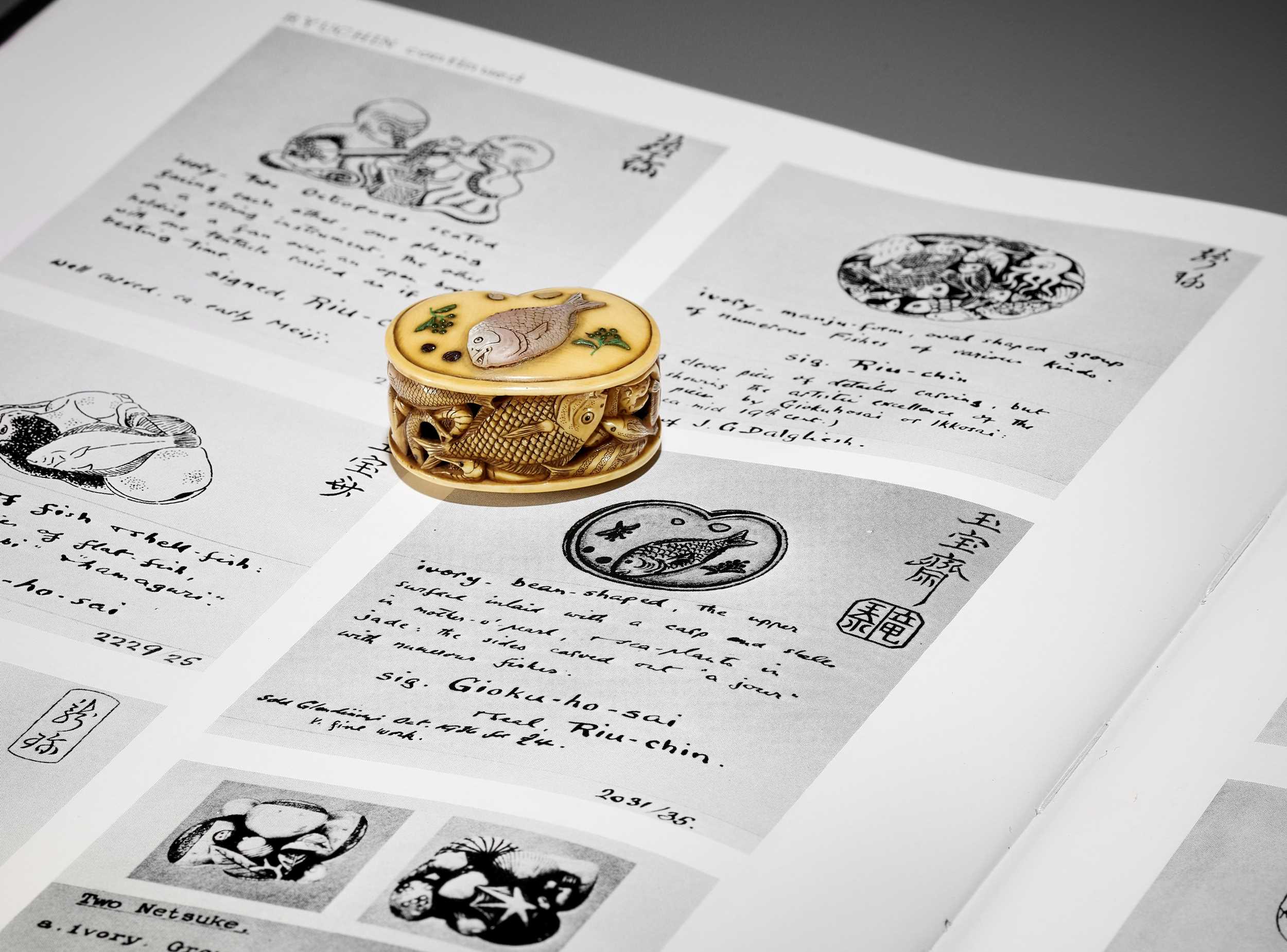
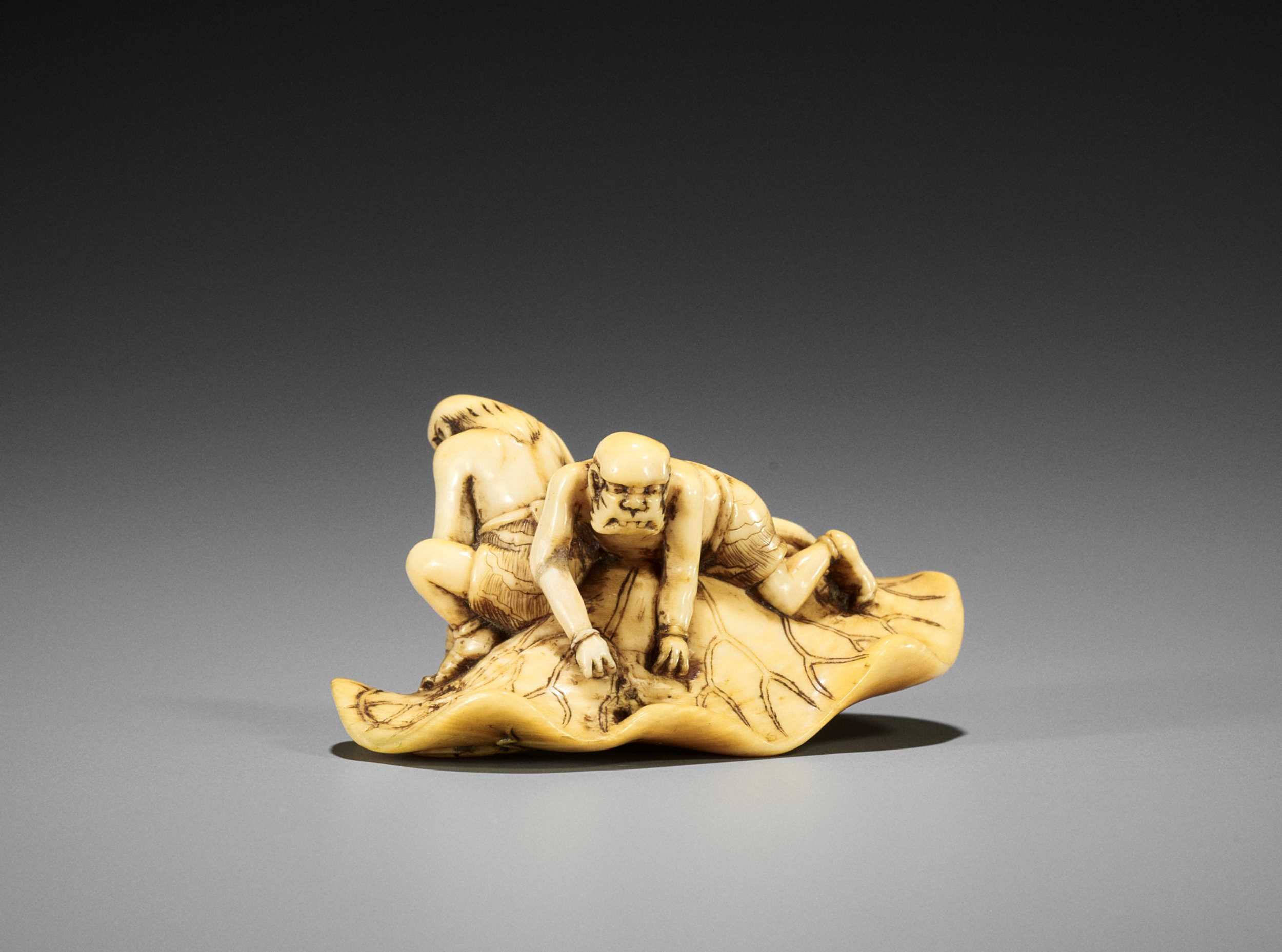

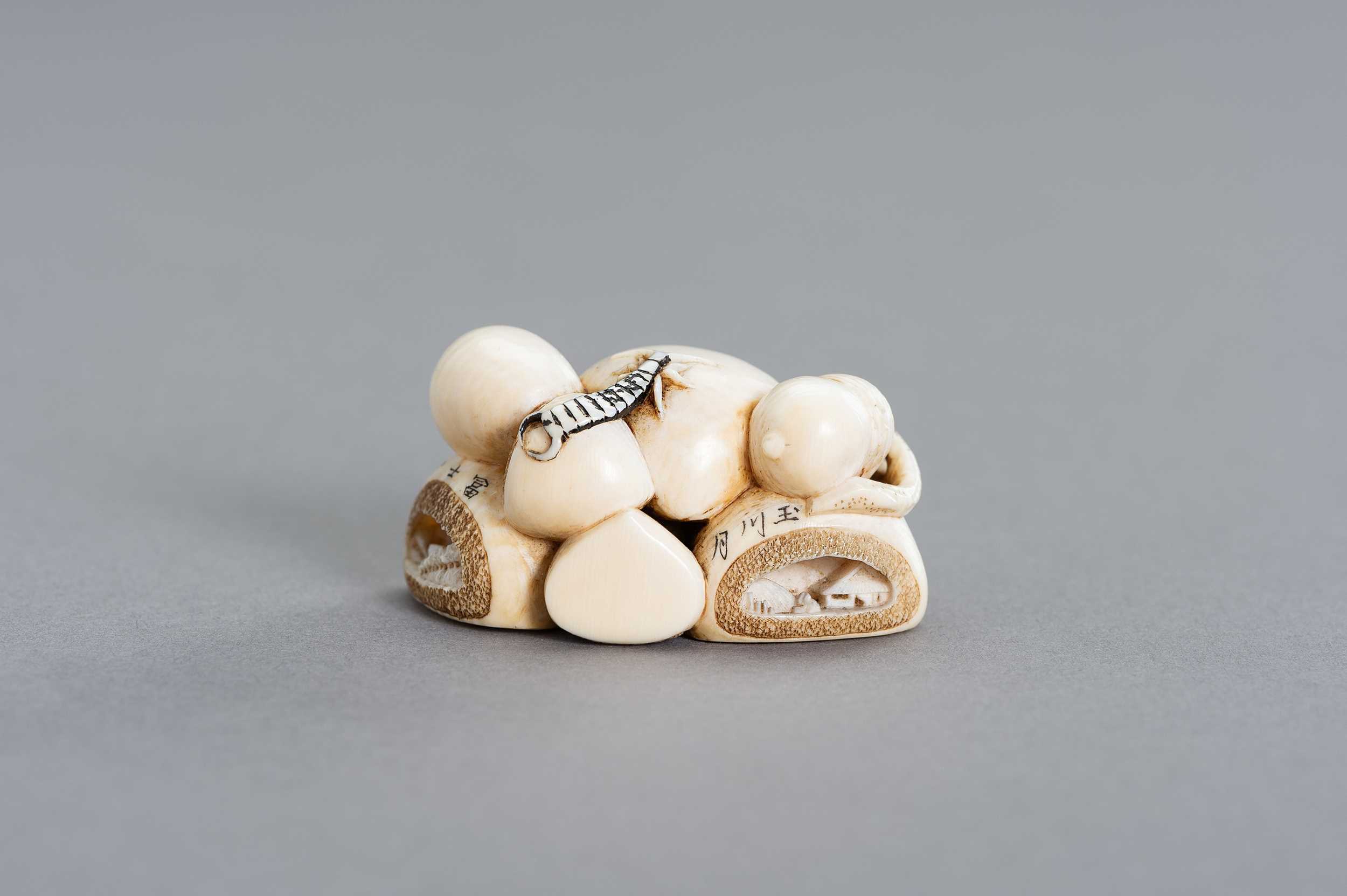

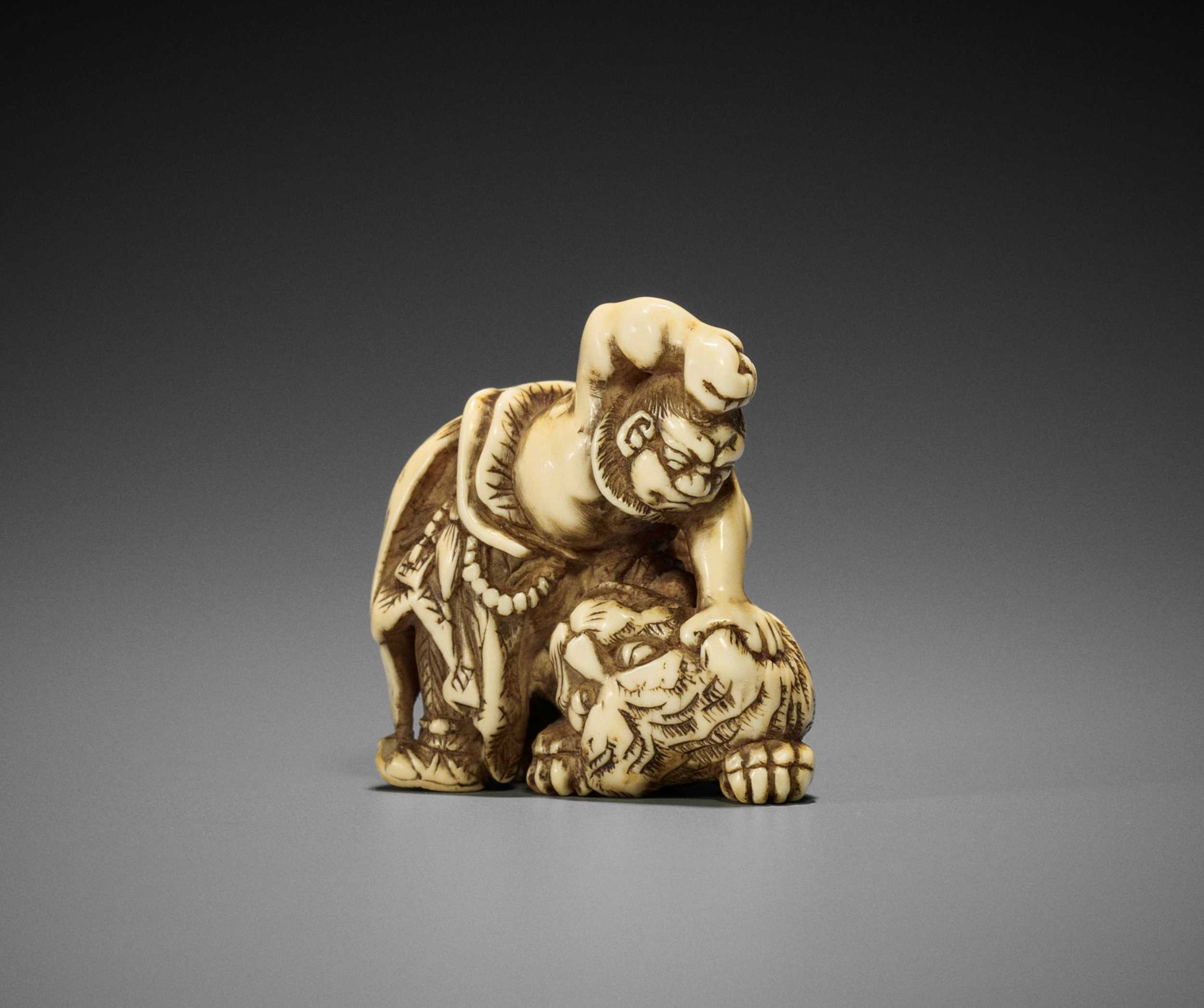


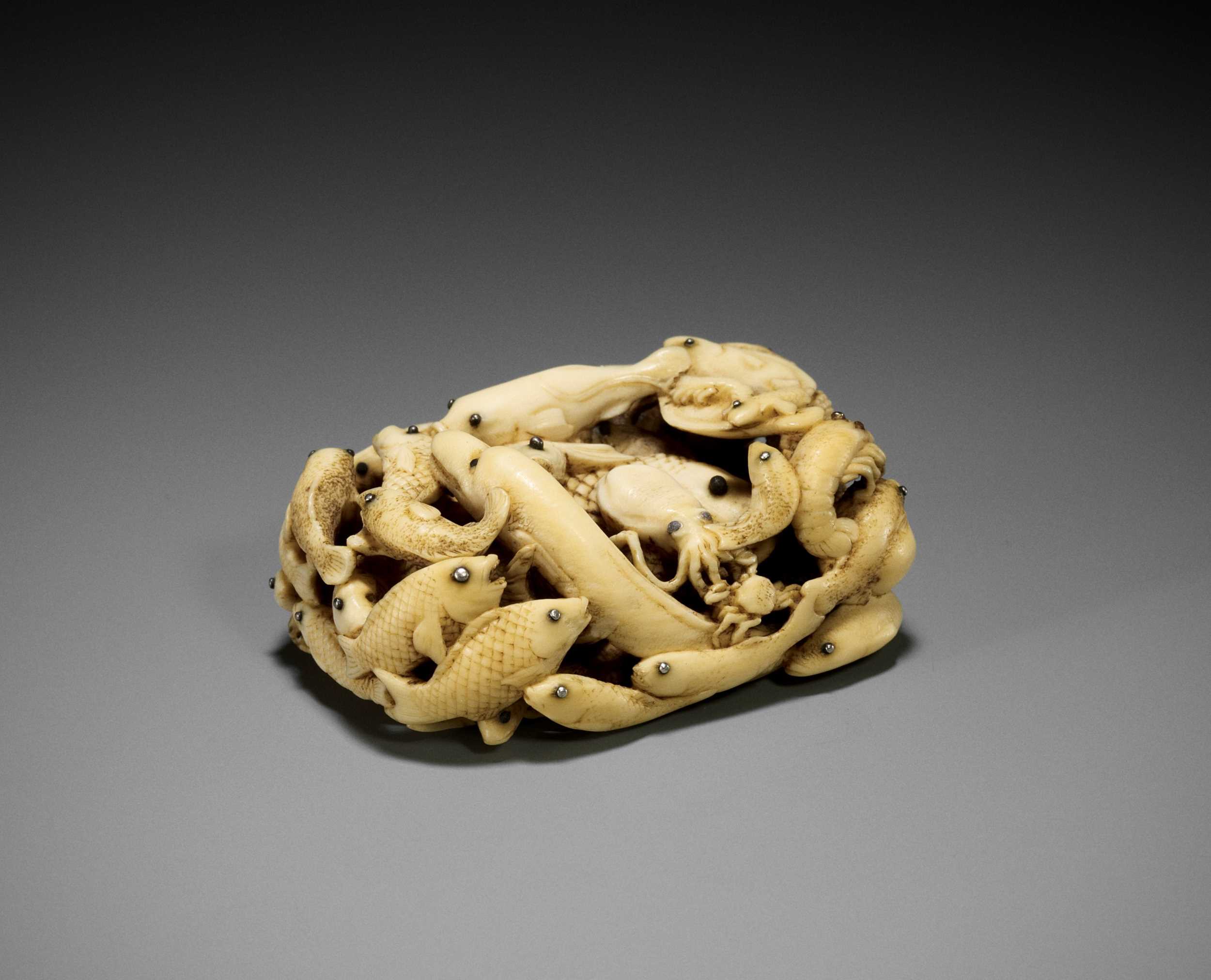

Testen Sie LotSearch und seine Premium-Features 7 Tage - ohne Kosten!
Lassen Sie sich automatisch über neue Objekte in kommenden Auktionen benachrichtigen.
Suchauftrag anlegen